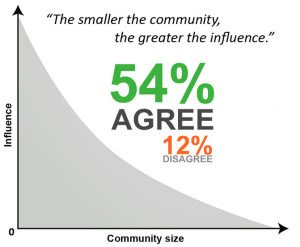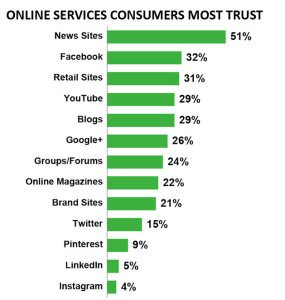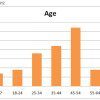In this current digital age, it is no secret that brands must take their message online to achieve success. While most brands now have a strong online presence, many are missing the target when choosing where to spend money and attempt to influence markets. Brand digital messaging should be focused and result after careful analyzation of industry metrics.
Brand Digital Messaging: Technorati Media 2013 Report
Technorati Media recently released their 2013 Brand Digital Messaging Report. Technorati is a large scale social media ad network bringing top brands and valuable influencers together. The report provided interaction statistics and predicted some brand digital messaging trends for the current year:
“Sixty percent of brand marketers predict an average increase of 40 percent in social spend for 2013. Currently, the bulk of brands’ overall digital spend goes to display advertising, search and video, with spending on social, including influencer outreach, making up only 10 percent of their total digital spend. Within their social budget, more than half goes to Facebook, followed by YouTube and Twitter, with the remaining 11 percent of their social spend going to blogs and influencers.
 Though blogs and influencers don’t get a large portion of brands’ digital spend, they rank high with consumers for trust, popularity and influence. When making overall purchase decisions, for consumers, blogs trail only behind retail and brand sites. With regard to overall sources for information on the internet, blogs rank among the top five “most trustworthy” sources. As an example, according to consumers, blogs are more influential in shaping opinion than Twitter, and when it comes to affecting purchase decisions, more important than Facebook.
Though blogs and influencers don’t get a large portion of brands’ digital spend, they rank high with consumers for trust, popularity and influence. When making overall purchase decisions, for consumers, blogs trail only behind retail and brand sites. With regard to overall sources for information on the internet, blogs rank among the top five “most trustworthy” sources. As an example, according to consumers, blogs are more influential in shaping opinion than Twitter, and when it comes to affecting purchase decisions, more important than Facebook.
In short, where brands are spending is not fully aligned with how and where consumers are seeing value and being influenced. This has much to do with an essential hurdle faced by most content creators: a lack of metrics and the fragmentation that leads to their complexity as a purchasable medium.
This report also details how different social platforms stack up against each other. You’ll see that influencers ranked page views above all other metrics when focusing on their own key metrics, while Google Analytics is the leader among tracking tools. Brands had different top metrics for identifying and selecting influencers, with comScore/Nielsen ranking first, closely followed by number of Twitter followers, Facebook friends, and the influencer’s potential to draw likes. It is important to note here, however, that due to their niche size, influencers are not well represented in comScore/Nielsen, further underscoring the disconnect between influencer desirability and an ability to effectively find them at scale.
According to brand marketers, when metrics from their earned media goals are ranked, Facebook likes, traffic to their website, Facebook fans, and Twitter followers are the main contenders – a reversal from influencers, where monitoring traffic/page views ranked No. 1, followed by Facebook likes.”
This information shows the large disconnect with where brand digital messaging is maximized and where they actually spend their budget. It’s a lesson for all companies: brand digital messaging requires in-depth research and analyzation to properly understand each industry.
Brand Digital Messaging: Where Brands Are Social
 The runaway favorite for brands when interacting in social media is Facebook. Over 90% of brands reporting have a some level of presence on Facebook. Twitter comes in 2nd with 85% of brands maintaining a presence and YouTube is 3rd with 73% of brands taking advantage of the video sharing site. The most surprising fact is only 26% of brand managers report a presence on Google Plus. This shows a real disconnect because the Google Plus platform is run by the world’s largest search engine. These Google Plus Business Pages are part of the social network, but more importantly included in search listings for relevant queries.
The runaway favorite for brands when interacting in social media is Facebook. Over 90% of brands reporting have a some level of presence on Facebook. Twitter comes in 2nd with 85% of brands maintaining a presence and YouTube is 3rd with 73% of brands taking advantage of the video sharing site. The most surprising fact is only 26% of brand managers report a presence on Google Plus. This shows a real disconnect because the Google Plus platform is run by the world’s largest search engine. These Google Plus Business Pages are part of the social network, but more importantly included in search listings for relevant queries.
The brand digital messaging survey findings indicate consumers are turning to blogs when looking to make a purchase. Blogs were found to be the third-most influential digital resource (31%) when making overall purchases, only behind retail sites (56%) and brand sites (34%). In fact, blogs were found to be the fifth-most trustworthy source overall for information on the internet. YouTube, Facebook and Google+ are the most popular social properties for consumers.































